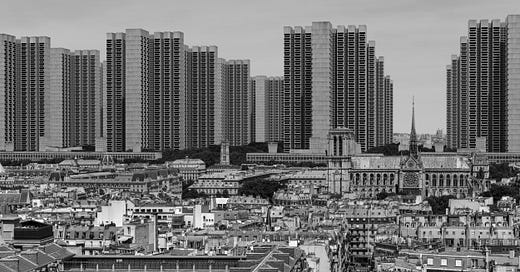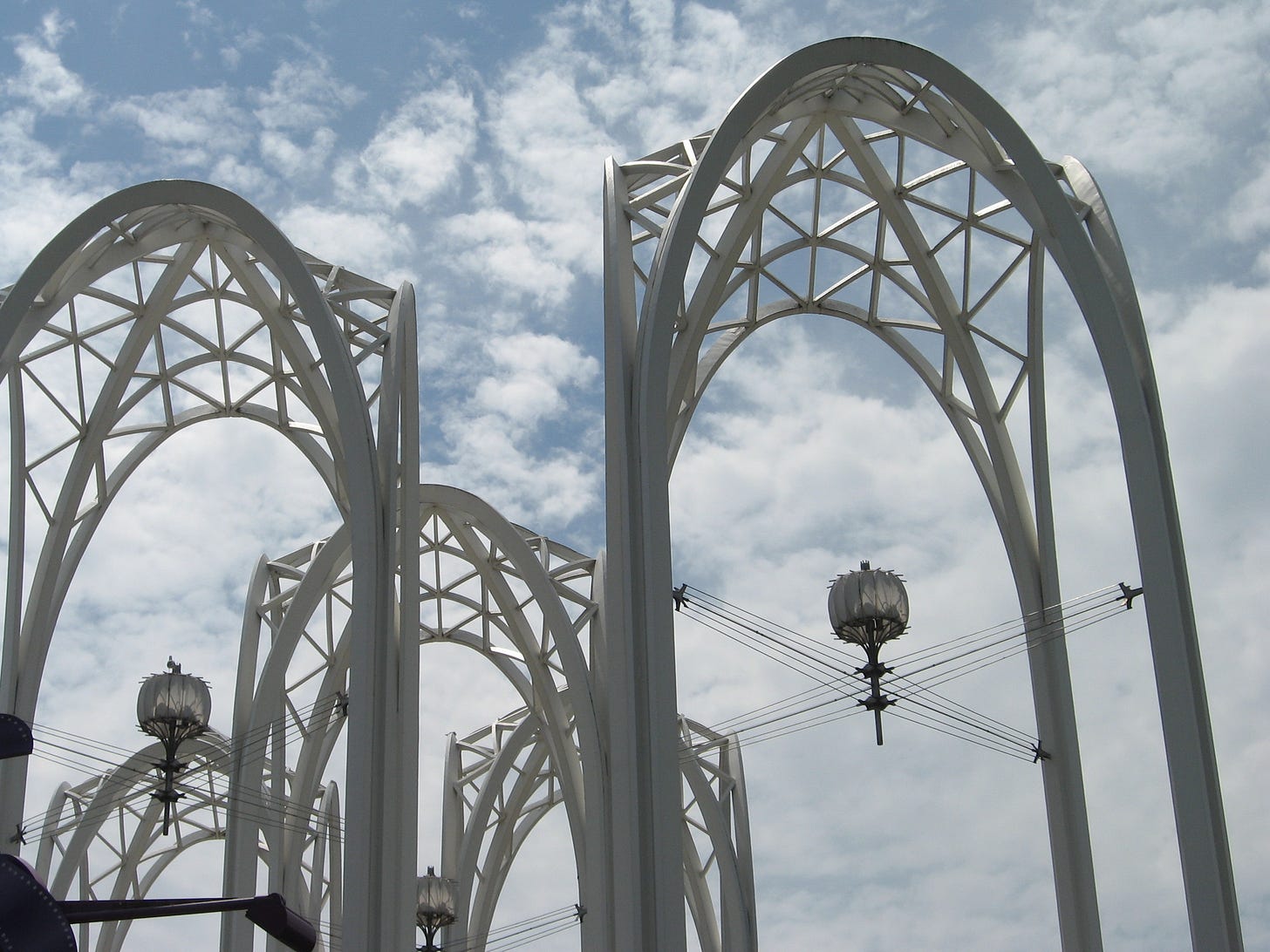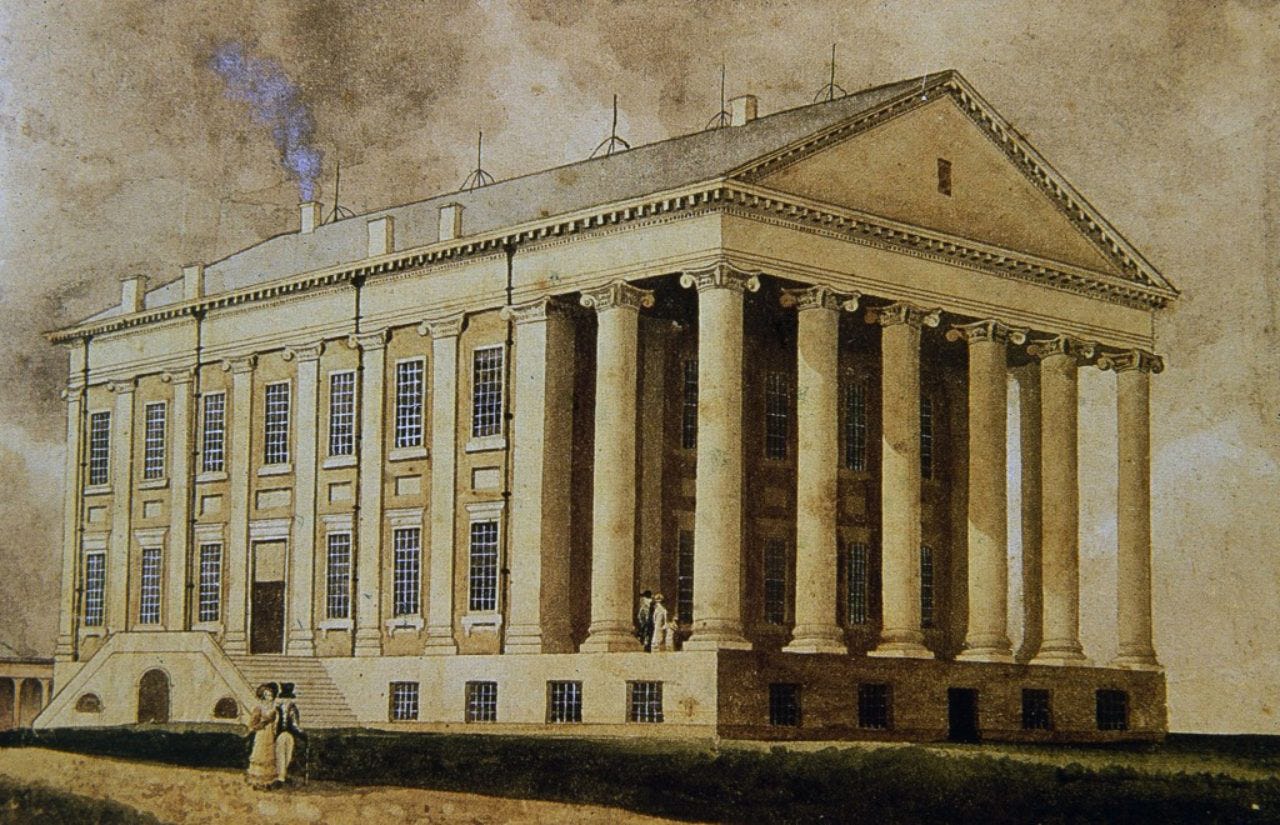Visualisation du plan Voisin pour Paris de Le Corbusier
Visualisation du plan Voisin pour Paris de Le Corbusier
I’m watching that old classic The Fountainhead with Gary Gooper. It is an interesting movie, to be sure. I think Ayn Rand, of her own admission, knew very little about the actual practice of architecture when she wrote it. Arriving as an immigrant from the Soviet Union in 1926, she was impressed by New York’s skyscrapers. Ayn saw them as a symbol of freedom.
She created a story where modernism becomes the architecture of individual expression, while classicism symbolizes slavish adherence to the ways of the past. Had Ms. Rand studied the classicism of the Beaux Arts era more deeply, she might have observed a good deal of innovation and creativity. If she had seen what the Soviet era did with high rise, modernist towers, she might have written a different story altogether.
No doubt, the work of Frank Lloyd Wright influenced the story.
Ironically, modernism would produce the repetitive blocks of Soviet style apartment blocks that characterize cities behind the Iron Curtain (as well as American ‘urban renewal’ in the twentieth century). Le Corbusier was a brilliant architect, yet I think most of us are quite happy that he didn’t redesign Paris in the manner shown above.
In contrast, Albert Speer built monstrous structures in a classical form, yet they loomed ominously over the people. His Germania is a case in point. Dictating a style does not good architecture make. On a sunny day, Washington DC’s Federal Triangle can be uplifting. On a grey and overcast day, it may seem like something from Speer’s studio. Consonant architecture is good. Rubber-stamped repetition not so much.
Germania, Albert Speer
I, for one, also am fond of the older skyscrapers in Lower Manhattan — the ones with fanciful classical forms on the top. I also like the work of Minoru Yamasaki, who designed the Pacific Science Center. He deftly weaves gothic vaults in a modern structure.
Pacific Science Center. Minoru Yamasaki. — Photo by Bob Kirchman
Pruitt-Igoe, also by Minoru Yamasaki.
The 20th Century Housing Block
Yamasaki also designed the Pruitt-Igoe complex, often cited as an example of urban planning gone wrong. These buildings were eventually demolished. Many cities of the old Soviet Block still have massive amounts of this type of housing. Anete Lusina [click to read] actually grew up in such a neighborhood in Latvia. Here she takes us on a tour walking through east European streets [click to read]. It is fascinating. She says: “I was lucky to have always lived near nature. You may associate neighbourhoods like these with vast areas full of pavement, but the places I lived during my teen years were a stone’s throw away from a lake. And forest.” Yes, the buildings were a leftover from an oppressive regime — but they were really simply home. Here are some More of Her Photos [click to view]. Life in the Microrayons [click to read] dives deeper.
Perhaps the argument should shift from style vs style to a discussion of architecture as an art form that beyond providing shelter might lift our aspirations to noble heights. Thomas Jefferson found it when he copied the Maison Carrée in Nimes for the Capitol of Virginia. Eero Saarinen found it when he honored Jefferson’s vision with a gleaming metal arch.
Capitol of Virginia by Thomas Jefferson. — Photo by Bob Kirchman, Painting by William Goodacre, 1830
I enjoy watching The Fountainhead, but I do not see it as a manifesto for modernism. It is in its own way a study in individualism, collaboration, and compromise — from Rand’s unique perspective. Most of us who actually design value collaboration, accept compromise, and seek inspiration. Real design is never a one man show. I like how Peter Müller-Munk puts it, “A designer is essentially a planner, a generalist among specialists.” If I had a nickel for every time I learned something from a worker on a jobsite, I wouldn’t have to work for clients anymore.
Actually, I see the movie as part of a larger discussion, where we might truly consider rebuilding Penn Station and enjoying its reflection in a distant glass tower.
The Fountainhead
Gary Cooper portrays Howard Roark.
Paris, without the towers — as it should be.












